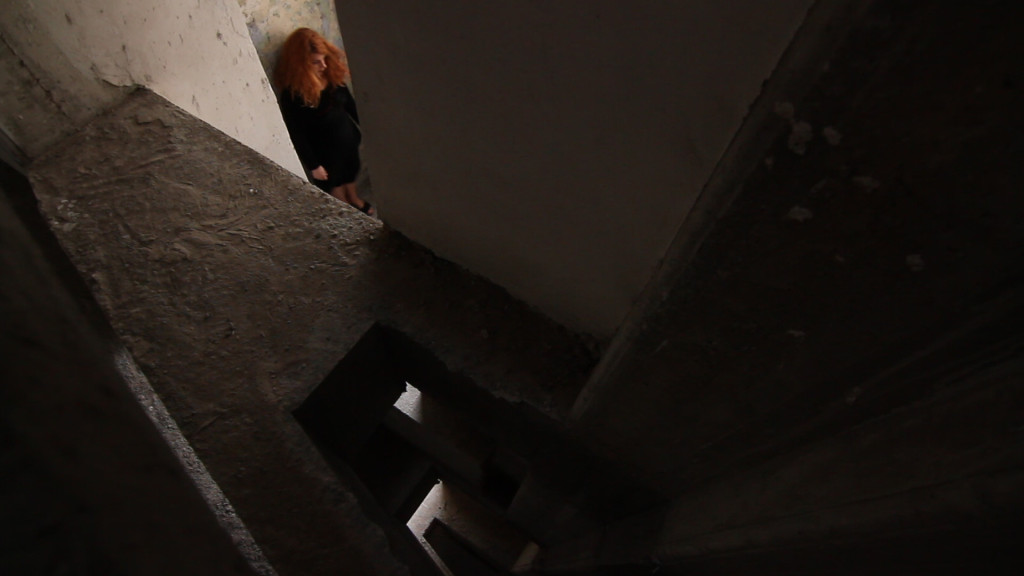
A job played on the field of life, among the thick plots of our everyday existence. An exercise of resistance to the whirlwinds of disinformation and the traumas of depersonalization. It is also a design – a powerful thought – that confronts the current state of affairs in order to get a glimpse of a way out, a way of escaping inhuman laws, a way of dodging the control tactic that produces panic and terror and a way of breaking from a situation of ambiguous superficiality (Dorfles). Works by Mary Zygouri train the eyes of her spectators and she leads them to a vortex of truth that squares with the past and today’s issues in order to place emphasis upon a power regime – of a disciplinary society (Foucault) – which has emerged since the collapse of politics and the end of cultural ethics.
For years now, Mary Zygouri has been opposing a model of global government that mortifies the power of knowledge and conspires “to depreciate and, therefore, undermine and paralyze the most personal of discretions, bearings, intuitions, tastes and judgments of the individual […]” (Abbate) with the presentation of an aesthetic territory aimed at re-educating the world in order to regenerate a threshold of reflection and build an argument about the gangrenes of the economy, the commercialization of existence and the mortification of critical thought. Zygouri uses various types of techniques and idioms – videos, performances, photography, collages and installations – in her attempt to recover civil sense and form individuals with thinking minds, in her creation of political and civic poetry that requests of spectators to re-read daily history through constructive inferences with the past to find answers and formulate future conjectures, if and when possible.
In her argumentation, democracy (δῆμος / κράτος) – along with truth, ἀλήθεια, morality and economy – is not just a concept or a simple word on a list. It is a social conquest, a field of life in which the people have got the power. It is also the leitmotif of a scenario which is allegorical, chameleon-like, erotic and heroic that restores contact with the individual’s conscience and with the urgency of a morality to be regained.
Antonello Tolve I would like to begin with the crux of your research: the desire to create, as you yourself have emphasized, a political and civic poetry.
Mary Zygouri: Since 2007 my work is preoccupied with questions of the archive. What interests me is to find ways to perform archival moments, fragments and footage that enable the production and dissemination of counter-histories and meanings.
For example in 2007 I constructed the hybrid persona of Zalouchos, a lawyer and ornithologist who lived in Greece at the beginning of 20th century. On the occasion of real events that took place during his life I tried to produce a fictional narrative that exposes the hidden underside of industrial production systems of power and control through scattered biographical references.
Recently, I have been working with the archives of Maria Karavela, a radical Greek performance artist, who worked largely outside the mainstream and died in 2012. Here, I try to engage with an ‘archeological’ reading of her archive, I try to find ways to make instances of her work speak in a manner that throws light to a represed Greek past related to cencorship and marginilization of deviance. I like to refer to the phrase ‘open arhival assemblanges’ when refering to this kind of works, archives that perform histories through their amassing with other obejcts and social structures.
Generally speaking, I am not necessarily interested in producing aesthetic objects. What I wish to do is to make visible a certain underside of diverse social and institutional structures that have the capacity to regulate life. This exposure equals with a re-writing of histories, an alteration to their perceptible qualities.
Anthropological areas, along with the social sphere, play a fundamental role in your work. In every one of your projects, you do not limit yourself to invading reality or looking for a connection with elements of living. Instead, your aim is to defend the social role of the artist – a unique identity that looks out onto areas of life – to open up to humankind and tamper with the immorality of today’s systems of power.
Since I graduated from the Art School and started working as a professional artist, I tried to use the urban and social space, with all their discontinuities, ruptures and contradicitons, as my studio-space. In this sense, I try to see the social role of the artist as an expanded social practice, lying on the production of systamatic or ephemeral intereferences in power structures that determine the ways we conduct ourselves in and accross isntitutions. Through such encounters and participations I wish to produce new spaces and possibilities for the publics.
One approach I often undertake is the generation of particular conditions or situations within institutionalized spaces that distrupt their normal functioning. For example I perform unvited in gallery openings, or I enter a poultry factory with a typewriter. What interests me in such ‘parasitical performances’ is to produce dynamic environments and create conditions for making visible a certain logic or certain irregularities that run through isntitutional and power structures. In this sense, these kinds of parasitical performances do not only disrupt, but redistribute and redirect desires and possibilities.
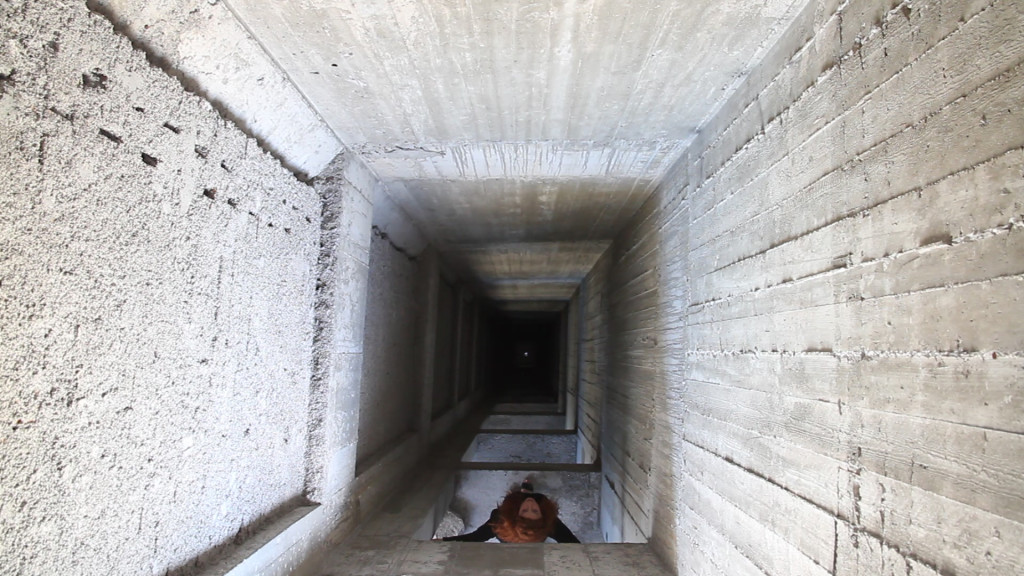
I mentioned the social role of the artist before. What is your role in today’s social texture?
When artists and other cultural producers take on their civic role as a citizen, the famous ivory tower can be transformed into a platform, a political megaphone. We become polical players in a way, perhaps playing outside party politics, but inside the public domain at large. Apparently, there is no script for making political works, especially nowadays where the word artist has lost much of its traditional meaning. Art, however, as any form of cultural production, can be used as a transformative practice through mediating representations of social in general and through mobilizing or calling to certain types of action.
We live in a condition marked by restrictions and disciplinary restraints. So it is important for art to pose alternative views of the world, to denaturalize given discourses, to struggle for questions of meaning and to open pathways for different visions of ourselves. My view is that we need to maintin a faith in a culture of improvization and in the tranformative potential of open-ended encounters.
In response to the landslides of the politics «du jour» (of the depoliticization of the politician «du jour») and civic rifts – the freefall of an urban structure capable of taking care of its residents that characterizes today’s daily reality – you set a model which now focuses upon a view of our actual sightlessness to show us new ways to recover a much-needed civic dimension.
In a way, through the current crisis, the game of art stopped being a game anymore and became more something like a social event. A social situation. Art is a distinct field of social practice, but in a sense it always borders as it intervenes in social reality. Although existent, the limit between art and activism is malleable and precarisously defined. The emergency situation that we found ourselves in today sets the conditions necessary for re-examining this limit.
A while back, you told me that micropsychology and macroeconomics find a meeting point in your work. Would you like to illustrate this consideration of yours?
My work not only reflects and constructs images of public space and dicourses, but it is at a large extent influenced by the world around. In others words, I always try to open up my work to a dialogue with the material world in which I am positioned, whether this refers to ideological discourses that circulate at a given time in society or to the availability of resources through which my ideas are expressed. There is then always a kind of an dialogical relationship between the ideas I wish to express in my works and the social conditions in which my practice takes place. In this sense, the personal, or the micro-psychological, maintains always an open-ended relationship with the macroeconomical questions I wish to pose; they feed-off each other. I like to open my work by formulating questions that derive from personal experiences of the conditions around me and in the process leave my work to be determined by these conditions. The current economic crisis in Greece changed many things in the way artists think about political issues as it dislocated and inevitably rearticulated at a personal and social level certain identities, desires and beliefs.
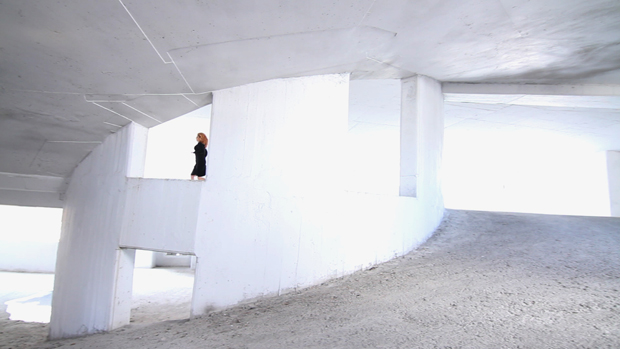
What is your relationship with the public? And what kind of relationship do you have to offer the public through your work?
I try every time to create a vivid, flowing situation, rather paradoxical or even poetic, where the audience would actively react either as participants or spectators, consiously or unconsiously. I wish to create situations for non-specialist publics that may effect in transient and ephemeral collective identifications that usually revolve around a set of political questions.
I see my presence in these situations as performing a regulation, but in a manner that it regulates a spontaneity, a setting in motion of forces that interrupt the normal everyday flow and transform it. In this sense, performance for me becomes a locus of discursive and affective production.
Valutazione democratica: vendo, compro, permuto (Democratic assessment: I Sell, I Buy, I Exchange) is the title of your 2009 performance. But it is also part of a path, an argument that focuses the spectator on your research, the quest for democracy (and for freedom) which has been lost in the abysses of planetary corruption.
In this performance I wished to address questions of democracy and civic particpation through invoking discourses and practices from the economic sphere. The contemporary dogmas of ‘necessity’ and inevitability are built always on the basis of an economic discourse that violently prioritizes notions such as profitability, adjastment and optimization. This dominant neoliberal discourse, as we saw recently around the world, can even bypass hard-won democratic rights by assinging the task of governing to specialist experts and technocrats.
In my action in Rome at Monte di Pietà I performed a ritual of market exchange and liquidation which took the form of publicly humiliating of my Greek identity. This ritual restaged a condition of selling-out in a pawn shop under the pressure of dogmas of necessity and inevitability. With the ephemeral community that was formed during the performance I wished to intervene spatially and temporally in the cityscape. Piligrimage. In this way the performance took the form of a political protest that balanced between activism and artistic performance.
Along with performance, videos collages and installations are other essential idioms in your work.
The use of different media depends on the concept that I wish to communicate each time. In this sense there is no medium specificity; I often mobilize different media to achieve different ends. Having said that, I mostly tend to work with performance and video. Often, in my performences – or video performances – I use different props such as collages and sculptures so as to construct environments. In this sense the use of media such as collage and sculture overlaps and interacts with the use of performance. Another element I employ and that also informs my work at a large degree is research. Through research I often get in initial contact with the particular themes that I wish to explore. All these media and elements together form my own peronal language.
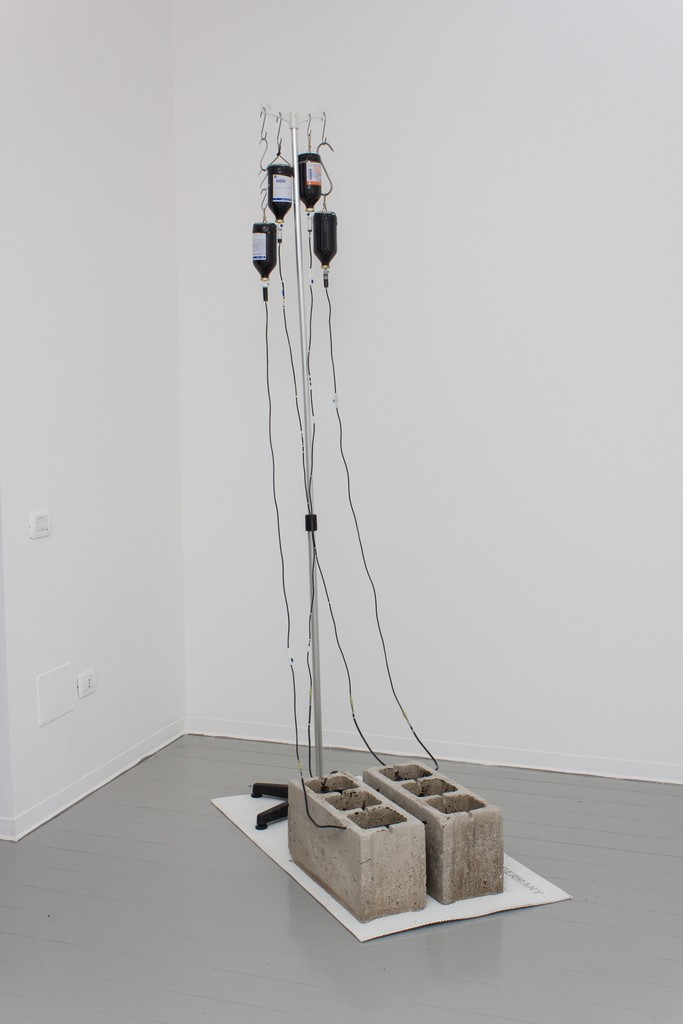
Symbiosis and Long Live The King are part of a trilogy about today’s happenings. What is this project?
Another critical strategy I often emply refers to the allegorical attitude; The allegory can function as a critical or ‘destructive’ strategy. In the allegories I stage the primary interest does not lie on the linguistiv but on the visual. The allegorical intention points back to the future, as if it strives to remember a primary meaning long forgotten. In other words, the allegorical for me is another way of reconstructing history visually through which I try to change the established patterns of communication without aiming directly at the communicative sociality.
Your roots, however, are connected to painting.
My first studies were in painting and I often think of my work through the frameworks I developed back then. Painting is the basis, the axis… In practical terms, I very often encounter painting in the process of editing my visual material.
With BULLMARKET you worked with some mythological elements. The myths of Narcissus, the Minotaur and the Abduction of Europa meet and cross in an aesthetic cartography that comes to terms with history and today’s situation to accentuate the collapse of a power regime furnished upon the end of politics and the end of cultural ethics.
Minotaur’s myth refers to a story of transaction; it is essentially a myth of debt towards the power, the leading power of the time, the Cretans. There is an aspect of forceful exchange, an economic and calculative logic in this myth that I’d wish to foreground. Dogmas of necessities are always linked to hierarchies of power.
At the same time there is a relationship of dependency between the head of the bull, which is the object of transaction and generally symbolizes the economic domain, and myself. A kind of binding kinship. In a way I try to reflect on my subjectivation within the regimes of power and the disciplinary societies that you talk about. At the same time, on the one hand it is not so easy to get rid of the economic domain completely, while on the other new modes of action have to be invented so as to surpass the economic. I engage in this paradoxical symbiotic relationship with the head of the dead bull, I have feelings both of attraction and repulsion towards it, if you like. Living together with the decapitated head symbolizes a cathartic process towards some sort of subjective transformation, yet without any guaranteed positive solution.
As soon as i wake up and enter the action in the beginning of the film, I start realizing my entraptment in these relations of power and exchange. The time of symbiosis indexes relations of domination and dependency, a claustrophobic co-habitation. The film, in this sense, is an allegory referring to our structural entanglement in market relations and to all kinds of transactions, but also to the need to invent ways to modify or transform such relations . The realization of this entanglement is perhaps a necessary first step out both on a personal and social level. The process of finding a way out of the labyrinth archetypically stands for a process of metamorphosis, of transformations. This element of metamorphosis is the one that can potentially create transformative subjective and objective situations.This metamorphosis is our opportunity to change the situation we live the last 4 years.
One final question. Do you think that art is capable of educating man (humankind) for real, democratic joy? Do you think that people can recover their civic honesty through art? Do you think it is possible for them to recover their freedom?
For me the most important thing in socially and politically interventioninst art is a sense of commitment towards the power of art to effect social change. An intellectual, and even physical, readiness is required so as to forecast different possible futures and to try to make certain oppressive tendencies visible in a public domain. Apart from this, art always depends on the communication of a certain sensibility and awareness that can result to affective engagements with objects or ideas.
Participatory works have the potential to create such engagements and turn them productive for the publics within larger social structures. The civic potential of art depends very much on the contexts of reception as well as on ways certain ideas will be delivered. But, generally speaking, art can prove to be an important educational device through which the prospect for self-realization and social change can be communicated. There is a need, once again, for commitment.
images
(1 cover) Mary Zygouri – Dedalus #8. Courtesy Dino Morra Arte Contemporanea, Napoli, 2013. (2) Mary Zygouri – Dedalus #4. Courtesy Dino Morra Arte Contemporanea, Napoli, 2013. (3) Mary Zygouri – Dedalus #3. Courtesy Dino Morra Arte Contemporanea, Napoli, 2013. (4) Mary Zygouri – Dedalus #6. Courtesy Dino Morra Arte Contemporanea, Napoli, 2013. (5) Mary Zygouri – Vae Victis. Courtesy Dino Morra Arte Contemporanea, Napoli, 2013.







































